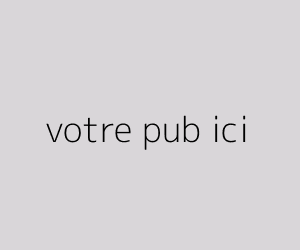- 17:30Morocco's Consumer Price Index Stabilizes as Core Inflation Climbs
- 17:15Bridging Economies: Quebec and Morocco Forge New Paths for Collaboration
- 17:00France-Morocco Relations Set to Deepen: Macron's Strategic State Visit Announced for Late October
- 16:40Dunedin Airport Implements Three-Minute Hug Limit to Enhance Traffic Flow
- 16:20Estonia Endorses Morocco's Autonomy Plan as Credible Solution for Sahara Region
- 16:00Bridging Cultures: A Celebration of Andalusian Heritage in Madrid
- 15:30Morocco Firmly Rejects UN Envoy's Partition Proposal for Sahara
- 15:24Star Power: How Celebrities Shape Voter Choices in the 2024 Presidential Election
- 14:45UN Envoy Signals Potential Shift in Sahara Mediation Efforts
Follow us on Facebook
Deceleration in Banking Credit Growth: A Closer Look at Morocco's Financial Landscape
After experiencing a robust growth rate of 7.5% in 2022, the expansion of banking credit in Morocco has slowed down to 4.9% by the end of October 2023. This deceleration is attributed to a 3.8% decline in cash facilities, marking a notable contrast to their significant surge over the past three years. Despite this setback, cash facility balances still surpass equipment loans, even with the latter seeing an 8.4% annual increase. Concurrently, household loans show a 2% yearly rise, primarily driven by housing loans.
Banking Credit Overview: Oct 2023 Statistics
Banking credit reached 1.081 trillion MAD by the end of October 2023, according to the latest monetary statistics from Bank Al-Maghrib (BAM). This represents a 4.9% increase over the past year, compared to a 7.5% rise at the end of December 2022. The deceleration can be attributed to the slowdown in credit to the non-financial sector, which grew by 2.7% at the end of October, reaching 925.57 billion MAD, instead of the 7.9% reported at the end of December 2022. Notably, this modest evolution is impacted by a 1% decrease in loans to private enterprises, contrasting with an average growth of 10.3% the previous year. Conversely, loans to public enterprises continue their double-digit growth, increasing by 40.6% this time.
Sectoral Breakdown and Cash Facility Decline:
Examining the breakdown by economic objective, a 3.8% decrease in cash facilities is observed (-4.2% for non-financial sector cash facilities). This signifies a notable slowdown after the significant upswing witnessed over the past three years. Since 2020, short-term credit has shown almost continuous growth, a trend that continued until the end of 2022, with an annual double-digit increase in short-term loans to private enterprises.
Despite the decline in cash facilities recorded at the end of October 2023, totaling 257.98 billion MAD, these facilities still constitute approximately 24% of the banking debt structure. Interestingly, their balances continue to exceed equipment loans, even with equipment loans seeing an 8.4% increase to 190.71 billion MAD (5.1% at the non-financial sector level). Noteworthy is the lag in real estate developer credits, decreasing by 1.7% to 52.35 billion MAD by the end of October.
Household Loans and Non-Performing Loans:
In terms of household loans, there is a 2% annual increase, totaling 387.23 billion MAD. This mainly encompasses a 2.1% growth in housing loans and a marginal 0.1% rise in consumer loans. Islamic financing for housing, notably in the form of "Mourabaha immobilière," continues its upward trajectory, reaching 21.11 billion MAD, reflecting a 14% increase.
However, concerning non-performing loans, there has been a 6.4% surge to 95.16 billion MAD. Their ratio to total credit stands at 8.8%, signaling a concerning aspect in the financial landscape that warrants attention and strategic management.



